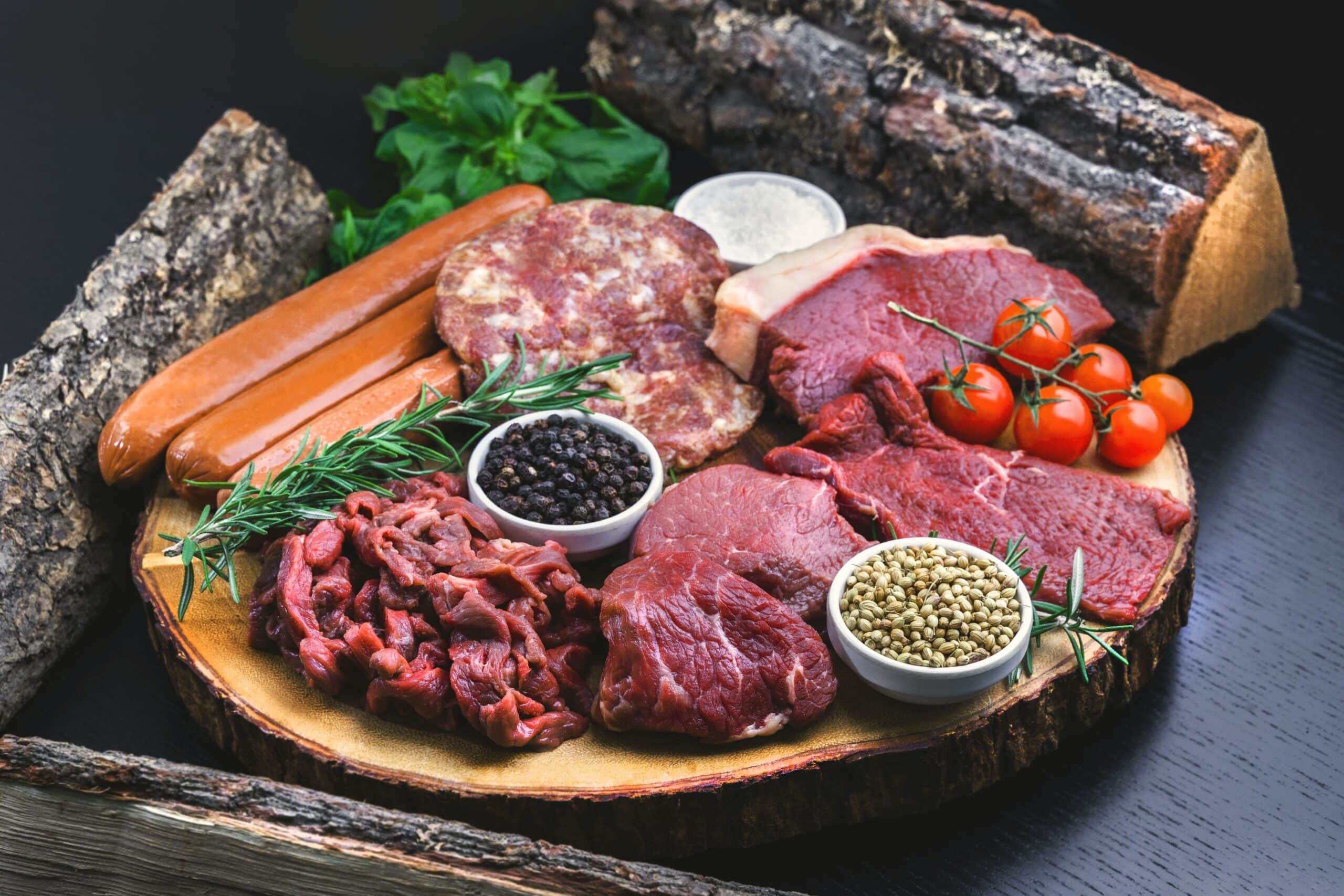The carnivore diet and the ketogenic (keto) diet are two popular low-carb dietary approaches that share similarities but also have distinct differences. In this blog post, we’ll explore the contrasting features of the carnivore diet and the keto diet, helping you understand their unique characteristics and potential benefits.
The Carnivore Diet: An Animal-Based Approach
The carnivore diet is an extremely restrictive diet that focuses exclusively on animal-based foods. It eliminates all plant-based foods, including fruits, vegetables, grains, legumes, nuts, and seeds. The primary macronutrients in the carnivore diet come from animal protein and fat, with little to no carbohydrates consumed. The diet’s emphasis is on eating high-quality meats, fish, eggs, and limited amounts of low-lactose dairy products. The carnivore diet aims to mimic the presumed eating patterns of our ancestors and relies on the belief that animal-based nutrition is essential for optimal health.
The Keto Diet: A Low-Carb, High-Fat Approach
The keto diet, short for the ketogenic diet, is another low-carb dietary approach that emphasizes high-fat consumption and moderate protein intake. Unlike the carnivore diet, the keto diet allows for a wider range of food options. It involves significantly reducing carbohydrate intake and replacing it with healthy fats. By doing so, the body enters a state of ketosis, where it primarily burns fat for fuel. The keto diet promotes consumption of foods like meats, fish, eggs, non-starchy vegetables, avocados, nuts, and seeds. It also allows for small amounts of dairy products and low-carb sweeteners.
Differences Between the Carnivore Diet and the Keto Diet
While both the carnivore diet and the keto diet are low-carb approaches, there are several key differences between them:
- Food Variety: The carnivore diet is more restrictive as it eliminates all plant-based foods, whereas the keto diet allows for a wider range of low-carb food options, including non-starchy vegetables.
- Carbohydrate Intake: The carnivore diet aims for zero carbohydrate consumption, while the keto diet typically allows for a small amount of carbohydrates, usually around 20-50 grams per day.
- Protein Intake: The carnivore diet emphasizes high protein consumption, while the keto diet focuses on moderate protein intake.
- Emphasis on Animal-Based Foods: The carnivore diet exclusively relies on animal-based foods, while the keto diet incorporates both animal-based and plant-based low-carb options.
- Philosophy and Goals: The carnivore diet is centered around ancestral eating patterns and the belief that animal-based nutrition is optimal, whereas the keto diet is primarily focused on achieving a state of ketosis and utilizing fat as the primary fuel source.
Choosing the Right Approach for You
When deciding between the carnivore diet and the keto diet, it’s crucial to consider your individual preferences, health goals, and any underlying health conditions. Both approaches have their merits and potential benefits, but they may not be suitable for everyone. Consulting with a healthcare professional or registered dietitian can provide personalized guidance and help you make an informed decision based on your unique needs.
Conclusion
While the carnivore diet and the keto diet share similarities as low-carb approaches, they have distinct differences in terms of food variety, carbohydrate and protein intake, and philosophical foundations. Understanding these differences can help you choose the dietary approach that aligns with your goals and suits your lifestyle. As with any major dietary change, it’s important to prioritize your health and well-being and to consult with a healthcare professional before embarking on a new diet plan.
